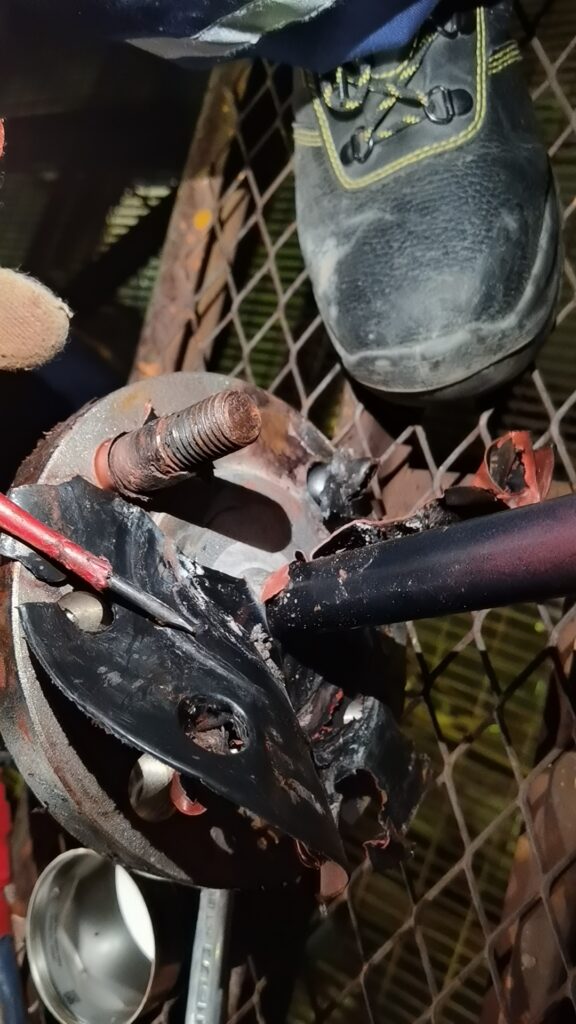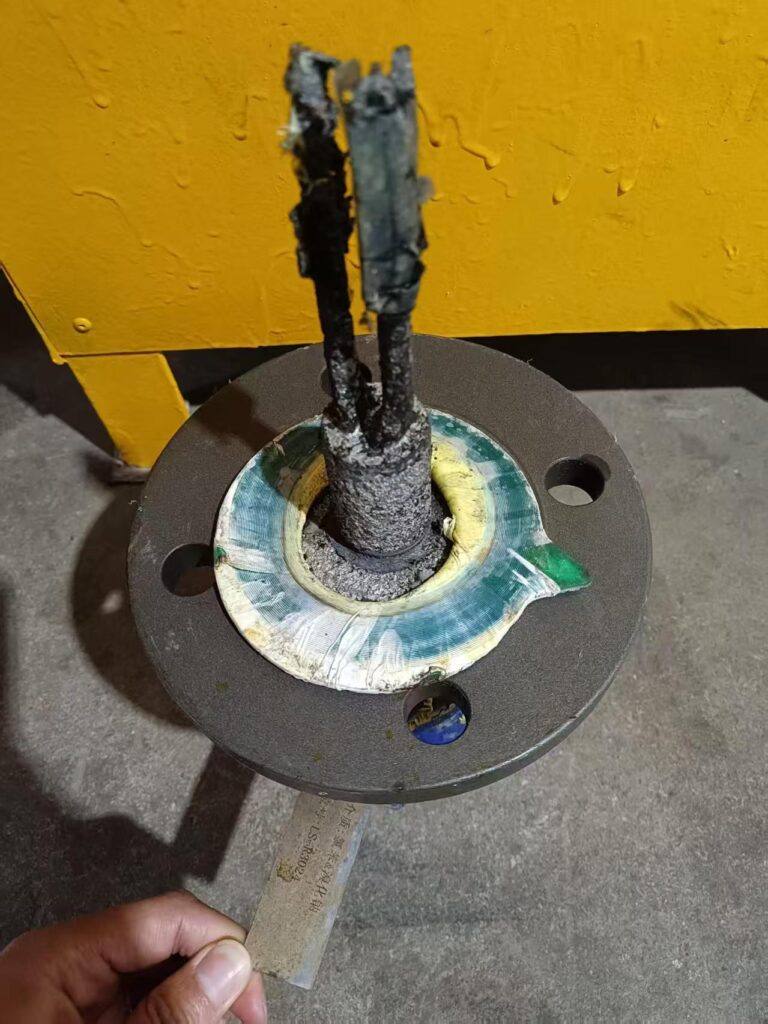Why Do Instrument Probe Coatings Fail?
Customers Keep Asking: Why Do Instrument Coatings Always Peel Off?
Recently, several chemical plant customers raised the same frustrating issue. No matter which brand they tried, the protective coating on their instrument probes would peel off within months—leading to corrosion, failure, and repeated replacements. What’s going wrong?
Industrial instrumentation is essentially a long-term frontline unit, operating in harsh environments. Whether in petrochemical plants, power stations, mining operations, or marine vessels, instruments must endure extreme temperatures, corrosive media, and pressure fluctuations.

And that thin layer of coating on the probe? It may look insignificant, but it’s the first and often the most vulnerable line of defense. In reality, countless maintenance teams complain about coating delamination—sometimes within three months of installation. But the problem isn’t just “bad paint.” It’s far more complex.
1. What Are Functional Coatings, and How Are They Different From Paint?
Traditional “paint” mainly serves decorative or basic rust-prevention purposes. But modern instrument coatings have evolved into multi-functional systems. Here are several major types of functional coatings used on industrial probes:
1. Anti-Corrosion Coatings
Think of this as a raincoat for the probe—repelling water, salt, acids, alkalis, and oils. Common systems include epoxy zinc-rich primers, phosphate primers, and fluorocarbon or polyurethane topcoats. Premium solutions may add a zinc sacrificial layer at the base to resist chemical and atmospheric corrosion.
2. High-Temperature Coatings
Made with polyimides, ceramics, or hybrid organic-inorganic materials, these coatings don’t soften, crack, or discolor under high heat. Their high glass transition temperature (Tg) makes them suitable for environments like boilers and engine compartments.
3. Wear-Resistant & Self-Lubricating Coatings
For sensors with moving parts, such as valves or frequently adjusted instruments, regular coatings won’t last. Functional coatings enhanced with PTFE (Teflon), MoS₂ (molybdenum disulfide), or similar additives reduce friction and extend service life.

4. Superhydrophobic & Anti-Condensation Coatings
Instruments like weather sensors or ultrasonic/radar level transmitters must stay clean and dry. These coatings use nanoscale textures and modified silicones to repel water droplets and contaminants, preventing signal interference.
5. Anti-Static & Electromagnetic Shielding Coatings
For explosive or high-precision environments, anti-static coatings infused with conductive polymers, carbon nanotubes, or metallic fillers help prevent static discharge and EMI.
6. Self-Healing Smart Coatings
This cutting-edge technology involves microcapsules embedded within the coating. When microcracks occur, healing agents are released to repair the surface, significantly extending the probe’s lifespan in hostile conditions.
Bottom line: A modern instrument probe coating is not just a decorative film—it’s a layered, engineered defense system.

2. Why Do Coatings Fail So Quickly in High-Temperature Environments?
Engineers often assume coating failure is due to poor materials or sloppy work. But in many cases, heat is the real invisible killer.
1. Thermal Expansion Mismatch
The probe substrate and the coating expand at different rates. For instance, steel may elongate by 1 mm for every 100°C rise, but the coating may lag behind. This constant “tug-of-war” with every startup and shutdown causes microcracks, which eventually lead to large-scale delamination.
2. Thermal Degradation of Coatings
Most polymer coatings oxidize or decompose at high temperatures. Epoxy resins, for example, lose strength once they exceed Tg. They become soft, brittle, discolored, and start flaking. The substrate may also oxidize, reducing surface adhesion.
3. Accelerated Permeation by Moisture and Chemicals
High temperatures enlarge micropores in the coating, allowing water and ions to penetrate more easily. Once moisture reaches the base layer, it creates a miniature corrosion cell, lifting the coating from below.
4. Multilayer Coating Challenges
High-performance coatings often use multilayer systems. But if these layers have poor thermal compatibility or weak interlayer bonding, delamination is inevitable—regardless of how good the topcoat is.
3. The Hidden Threat of Low-Pressure Environments
While high heat is an obvious threat, low-pressure environments like high altitudes, vacuum chambers, or aerospace systems can also damage coatings in less visible ways.
1. Volatile Components Evaporate Rapidly
Under low pressure, any residual solvents or unreacted monomers in the coating escape quickly, leaving behind pores that reduce density and adhesion.
2. Interface Delamination Due to Pressure Drop
In vacuum or low-pressure settings, the physical adsorption forces between the coating and the substrate weaken, especially if the adhesion relies on micro-anchoring. This leads to sudden peeling.
3. Electrostatic and Electrochemical Stress
Low pressure increases the likelihood of static buildup, especially in polymer-based coatings. These charges can cause micro-sparks or initiate fatigue cracks at the microscopic level.
4. Engineering Solutions
High-end probes often use high-density, low-volatility crosslinked coatings. Construction techniques like plasma activation, vacuum pretreatment, and ultrasonic cleaning help improve adhesion and long-term reliability.
4. Real-World Failures: The Consequences of Poor Coating Engineering
Case 1: Power Plant Near the Coast
A boiler level probe used a “high-temp grade” epoxy coating. Within six months, the coating peeled off in large sections, exposing the metal and causing internal corrosion. Root cause? Poor surface prep—no sandblasting, residual oil, and a single-layer system. Salt spray + heat + water ingress = total failure.
Case 2: High-Altitude Weather Sensors
Instruments used in low-pressure regions showed bubbling and delamination within weeks. Post-analysis showed poor curing and solvent outgassing under low pressure. Upgrading to better materials and surface prep finally resolved it.
Case 3: Oilfield Sensor with Inadequate Anti-Static Layer
A probe installed in a high-temp, low-pressure environment experienced electrical discharges (“flashover”) due to poor coating design, leading to total instrument failure.
Takeaway: Coating failure is rarely due to a single issue. It’s a systemic engineering problem, often caused by weak links in material selection, process control, or environmental design.
5. How to Make Instrument Probe Coatings Last Longer?
- Right Materials for the Right Conditions
Use high-Tg multilayer coatings in hot environments. For low-pressure settings, prioritize dense, crosslinked materials with surface-activated adhesion. - No Shortcuts in Surface Prep
Every layer matters—sandblasting, acid cleaning, and plasma activation must be done properly. Curing must be complete and uniform.
- Multifunctional Coating Design
Don’t rely on a single feature. Anti-corrosion, heat resistance, anti-static, and hydrophobic layers should work together as a system. - Strict Maintenance Protocols
Avoid rough handling or using aggressive cleaning agents. Train field staff on coating care and maintenance. - Simulated Aging Tests
Lab-based stress testing—salt spray, temperature cycling, and low-pressure simulation—can help identify weaknesses before deployment.
Conclusion: Coating Failure Is a Chain Reaction, Not Just a Bad Batch
Coating failure is often misunderstood. It’s not about one cheap product or one bad worker. It’s about the weakest link in a long chain—materials, processes, installation, and usage.
At Jiwei, we approach probe coatings as a complete system, engineered for durability across extreme industrial environments. Because in the real world, there’s no such thing as “just a better paint”—only better engineering.

